Getting Around Australia
Imagine a world where Isuzus still zoom down the highways, passed by the occasional Peugeot. Congratulations — you’re picturing Australia. Isuzu and Peugeot may have pulled out of The United States, but they stuck around The Land Down Under. They face stiff competition, though, from some States stalwarts, like Toyota, Mitsubishi, and Nissan. They say NIH-sun, though, not NEE-sahn. And their Nissan Rogues go by the name X-Trail.
For a lot of cars, you know the make but not the model. Kia Picanto? Toyota HiAce? Jhett’s Suzuki Jimny? I find it strange that different models sell in different markets.
And hey! What are all those MGs? Wrong link, I learned. These MGs are new, not as small as the MGs from the ’70s that I remember, and come from China. I’d need a longer stay in Australia to get used to these MGs that were new and shiny and couldn’t fit in my backpack.
You also see some unfamiliar marks, like Holden, Haval, and Skoda. I snapped a picture of a Skoda Scala, and not just because it could feature in delightful tongue twisters (“I sketched some skimpy skis on a Skoda Scala while scaling Skyang Kangri”). Scala is a computer language I used recently on a project. My privacy awareness made me flinch at including the license plate, though, so I couldn’t get the “Skoda” in the picture with the “Scala.” Lame:
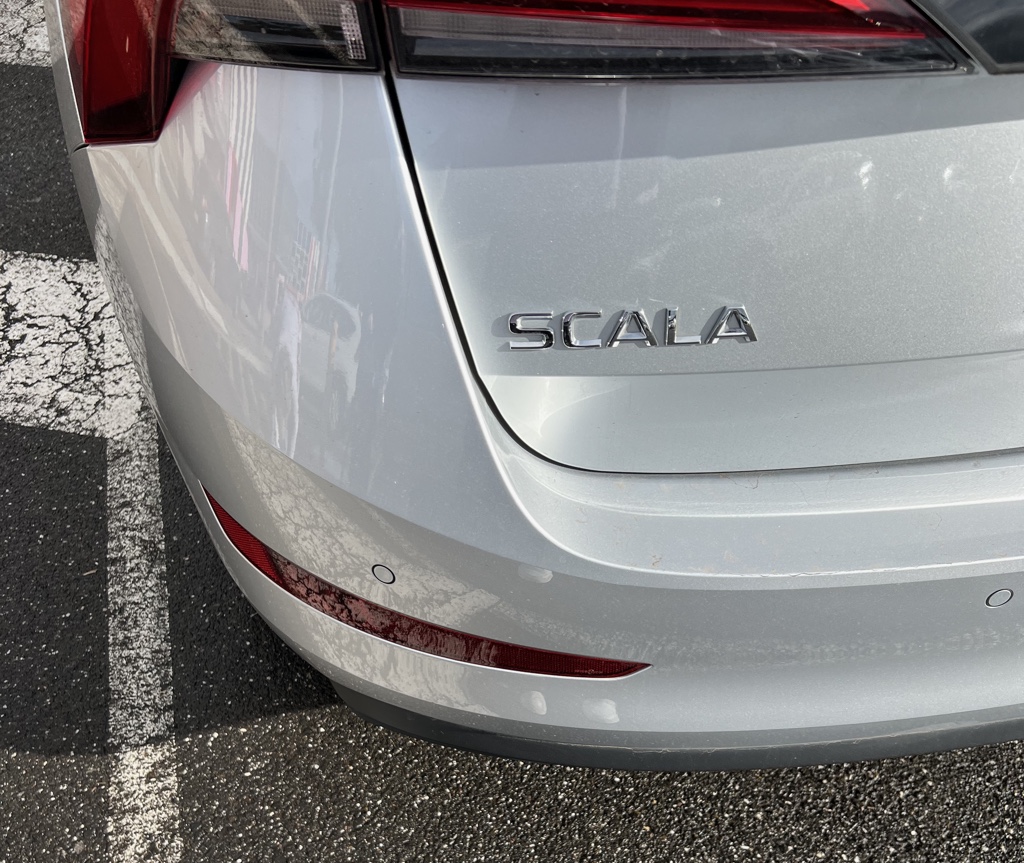
One day, though, we trailed a Haval whose license plate must have sneaked past the censors at the Department of Transportation. My admiration for such subterfuge overrode my privacy ethics, and I included the license plate in the picture. I’ll let you decide whether this was coincidence:
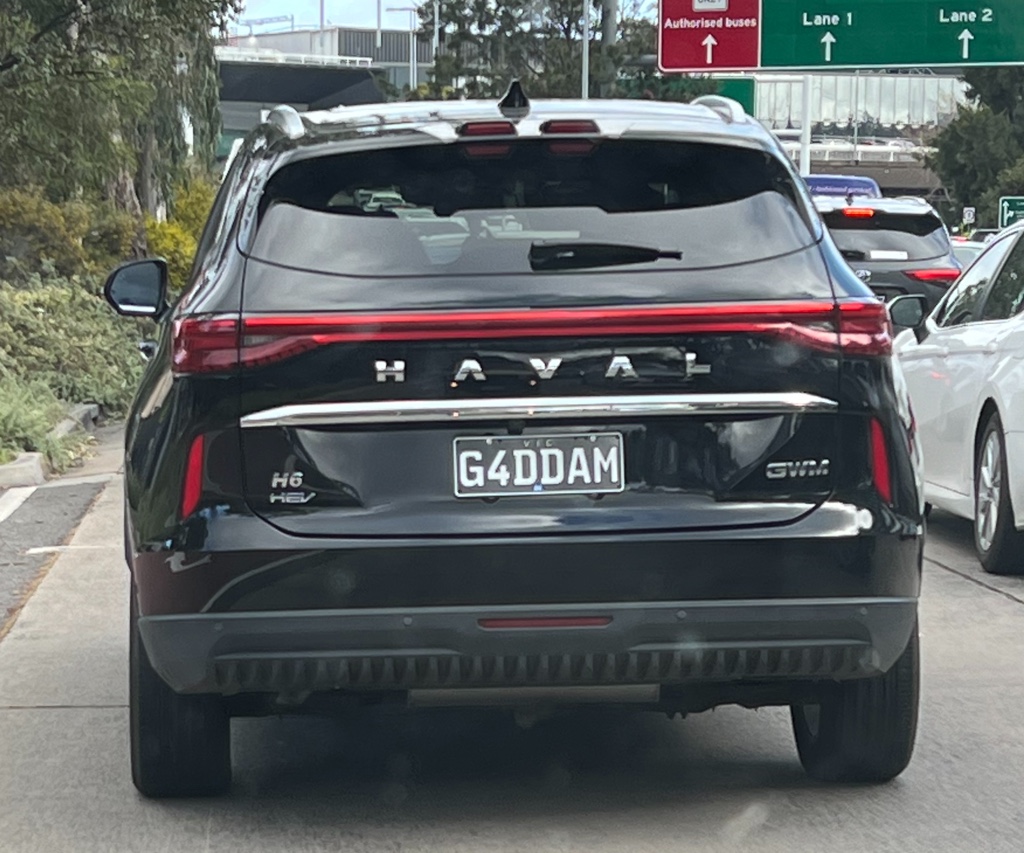
On a side note, the name “Haval” kept nagging me to craft some joke about the popularity as a wedding getaway car of their “Nagila” model. I couldn’t trust any of my travel companions, however, to have heard the song. Such a wasted opportunity.
Speaking of license plates, you notice that Australia’s plates are ultrawides compared to US widescreens. Curious, I looked up each country’s plates’ dimensions:
- Australia: 372mm × 134mm
- US: 12" × 6"
Oh, yeah. They measure differently there — they use the metric system. That’s tap tap tap 14.6" × 5.3". So yes, Australian plates are both wider and shorter than US plates.
Speaking of different, how have I gotten this far without mentioning they sit on the wrong side of the car when they drive! And they drive on the wrong side of the road! I guess you probably already knew that — about one-third of all countries drive on the left. Generally, you get over it pretty quick, especially as a passenger. More than once, though, I was shocked and outraged at someone driving while staring at their phone, and not looking at the road at all, only to realize that I was glaring at the front seat passenger. And crossing roads on foot? Forget about it — I never knew which way to look for oncoming traffic, and just spun my head like one of Kristian Vedel’s BIRDs while I hoped not to get run over. Getting run over wasn’t an idle worry, either — Australians seem to drive a lot faster in neighborhoods than we do in the US. It’s like they’re all teenage boys discovering the gas pedal. That must be why speed humps riddle neighborhood roads. Australian pedestrians, though, trust drivers completely, stepping into crosswalks without even looking. We never got so bold.
We saw typical traffic lights, of course, but many more roundabouts. We also saw hook turns, which apparently have disappeared everywhere but Melbourne CBD. That’s “Central Business District,” but I’d forgive you if you thought it meant “cannabidiol” after seeing one of these hook turns. You get in the far left lane, wait for your light, then turn right across both coming and going traffic. Jhett said he’s successfully avoided them the entire three years he’s lived there.
Traffic signs are familiar but different. Yield signs more approachably caution, “Give Way”:
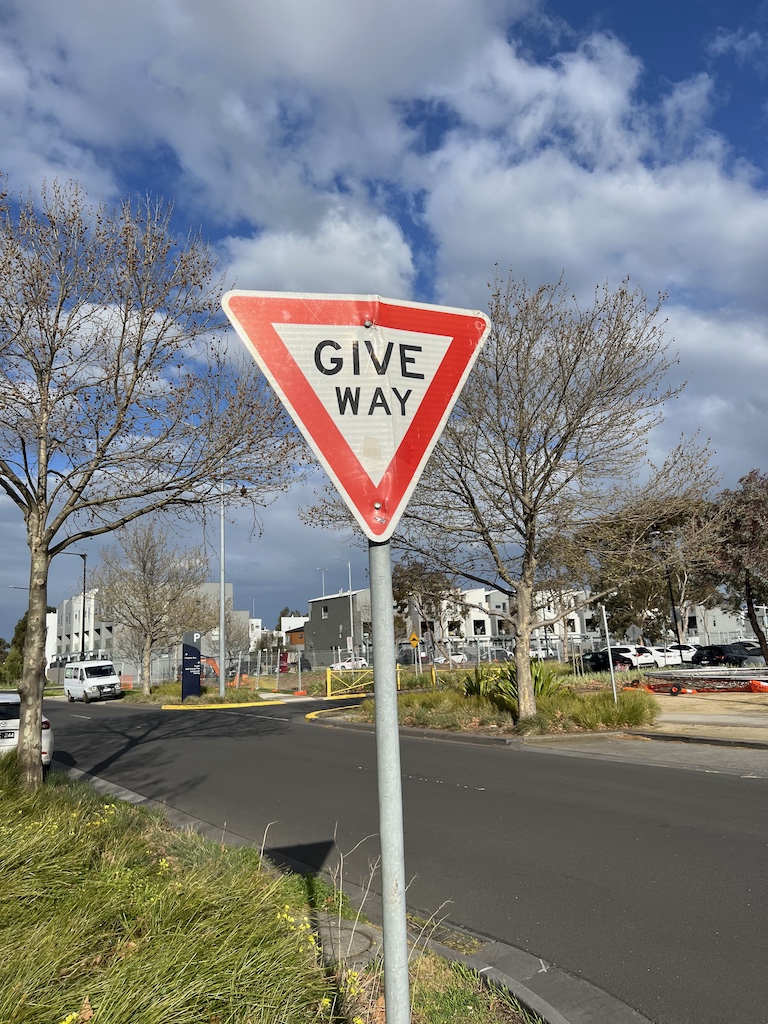
Pedestrian crossing signs ditch the stick figure for a disembodied shins-and-feet ensemble:
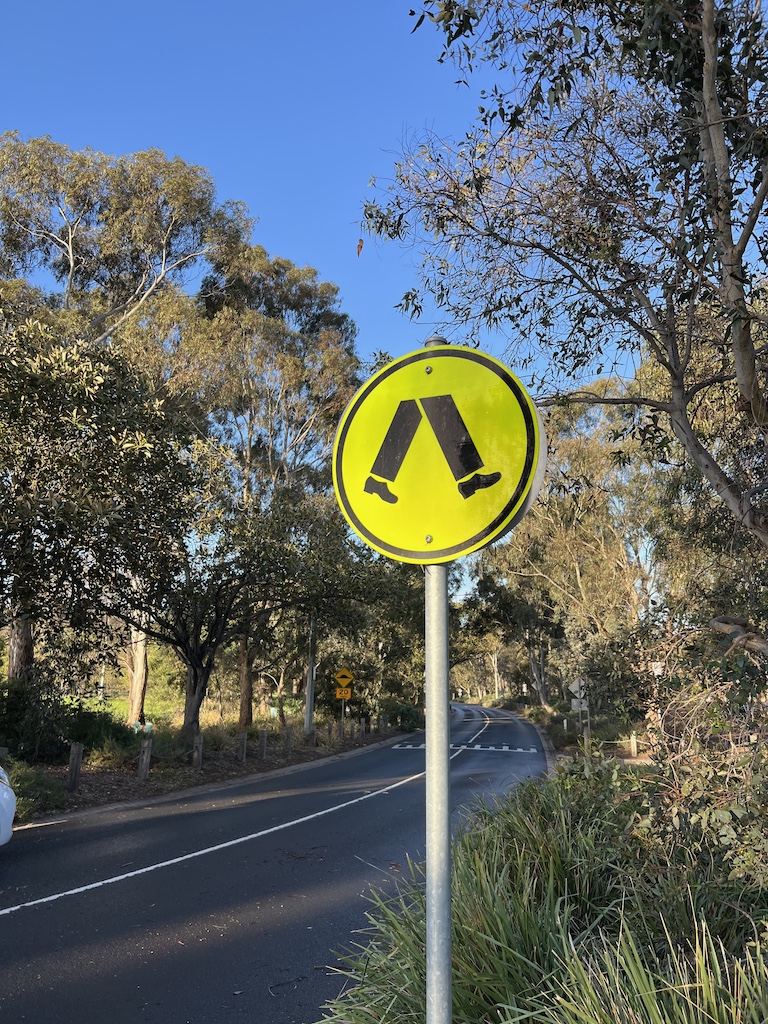
Arrows pointing in allowed directions sensibly have heads, but arrows depicting forbidden paths have none. This makes signs for, say, “No Right Turn” or “No U-turn” look like the Ghostbusters logo, but for worms:
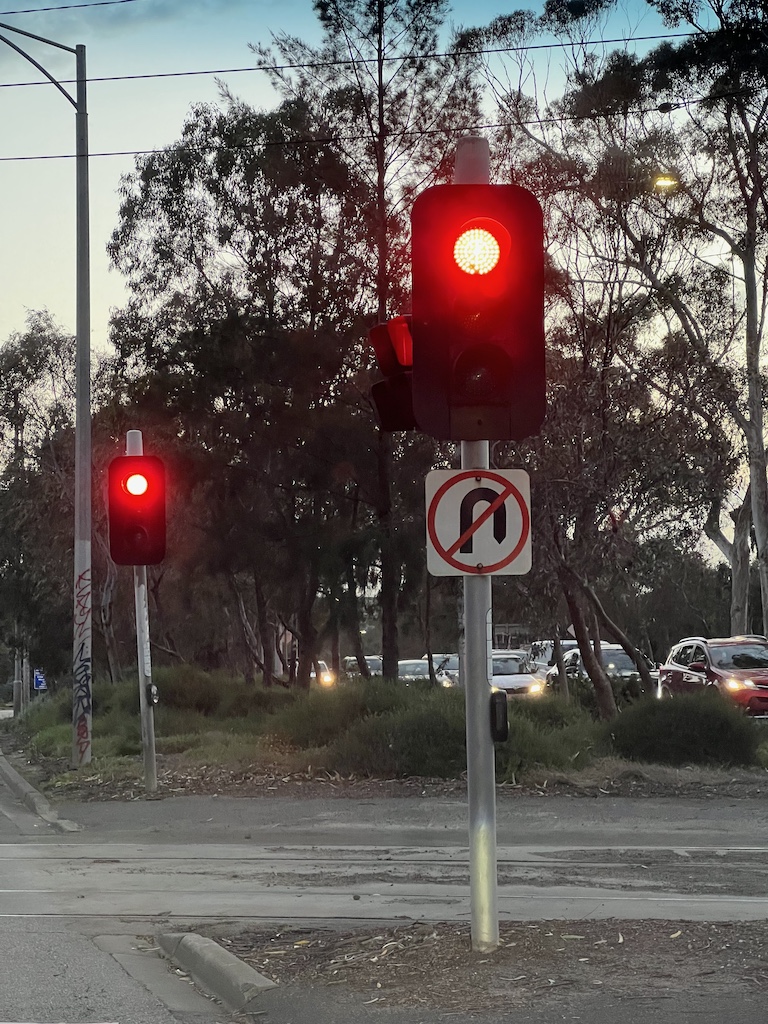
The public transit system combines trains, trams, and buses. They seem to fill the following segments:
- Trains: from the suburbs to the city and back.
- Trams: within the city.
- Buses: the last mile, from the train station to your house.
A single plastic pass, called a myki, works across all three forms. You get on a transportation mode, you “tap on” — you tap your card to the reader. You get off, you “tap off.” For the buses, the readers are on the bus. Russ told us that people play loose with bus tapping, and we noticed people not tapping on buses. For trains, the readers are in the gates entering the stations, so people tap in and out as they leave the station. For trams, the readers are on the tram, and you tap on but never off. And if you’ve entered the tram within the “free tram zone” in the heart of the city, you don’t tap at all. It’s a straightforward system, with enough quirks to confuse novices but not locals. And with multiple stops and mode switches, taking public transportation from the bus stop near your home to the train station to the tram stop near your destination takes about twice as long as taking an Uber. We took public transportation a few times, but by the end of our stay, Uber started notifying me that I was one of their best customers. I’m afraid to go back and see how much I spent.
The Uber drivers mostly drove Toyotas and drove in silence. We had one Uber driver, though, who picked us up in a Holden and chattered with us the whole drive. He spent his days as a grade-school PE teacher, and had visited the US a few times. Very personable and funny. He told us his pet chihuahua had been run over by a car the week before. It probably didn’t know which way to look. He said he bawled for that dog, and had decided he was going to tell his five-year-old son that the dog had run away. Aghast, Sherry said that, if she were his son, she’d feel terrible that the dog didn’t love him enough to stay, and would rather run away and live somewhere else. He laughed, acknowledged the potential for hurt feelings, and then decided he’d tell his son that the dog had found a new girlfriend, so that’s why he ran off. Love’s allure. He also told us about some Australian musicians we should listen to, and I truly meant to remember them, but I forgot. I think I was distracted by those Ghostbuster worm signs.
P.S. Credit where credit is due: I learned about the BIRD from Paul Lukas’ Inconspicuous Consumption — you should subscribe.
